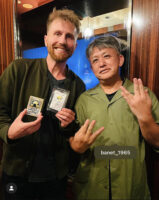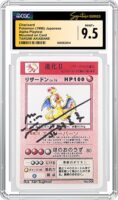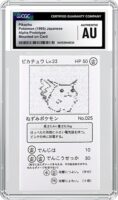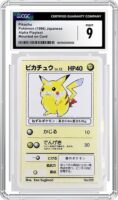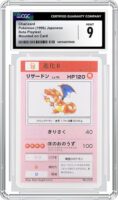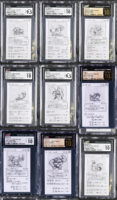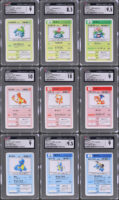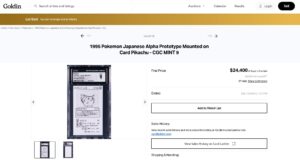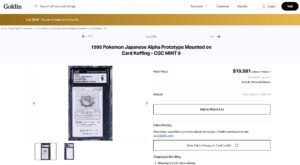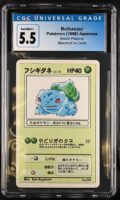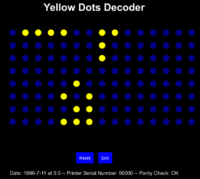Millions of Dollars of Prototype Pokemon Cards May Be Forgeries, Retired Creatures Employee Involved
The authenticity of the Pokemon TCG’s famous “prototype cards” are now being called into question.
Last year, hundreds of prototype Pokemon cards began to sell in collecting circles from the personal collection of Takumi Akabane, one of the original creators of the Pokemon TCG. He worked at Creatures until 2008. He recently attended events to sign some of the cards. Grading company CGC worked closely with Akabane to verify the cards’ authenticity.
The prototype cards represent the earliest days of the TCG, produced in 1996 before Base Set released in Japan. They show the progression of Pokemon cards from their “proof of concept” stage where they used their Red & Green sprites to their beta designs that used their final artwork from Mitsuhiro Arita and Ken Sugimori.
Last night, however, the collecting community was hit by a magnitude 9.0 earthquake.
One of the buyers of the cards, PFM, used an obscure forensic technique to reveal many of the cards were actually printed in the summer of 2024. This includes cards that CGC authenticated as coming directly from Akabane’s collection.
Most printers imbue hidden watermarks on their pages that contain information like the printer’s serial number and the date its pages were printed. This is so governments and law enforcement can track the origins of documents.
For example, the prototype Nidoqueen has an imperceptible dot code matrix that shows it was printed on June 29th, 2024. Many other collectors have also posted scans of their cards, discovering that theirs too were printed in 2024.
In a statement to PokeBeach, PFM said, “It was really disheartening to find this out. More than the financial aspect, I thought it was cool to own a piece of history and it’s unfortunate it turned out this way.”
It’s currently unclear if some or all of the cards are fake. Since last year, fans have already distinguished different print runs of the cards. It’s unknown if there is a real, original print run.
It’s also unclear if Takumi Akabane knew any of the cards were printed in 2024. It seems unlikely a former Pokemon employee would be involved in any purposeful wrongdoing, especially when Pokemon takes their IP very seriously.
Several millions dollars of the cards have sold since last year. For example, a prototype Pikachu recently sold for $20,000 at Goldin Auction House. It is one of hundreds of cards.
Collectors are currently contacting auction houses to remove active listings of the cards until the full story is uncovered.
CGC Cards, who authenticated the cards, has not made a public statement yet.
However, Alt auction house published the following: “We’re aware of recent claims regarding CGC graded Pokemon Prototype and Playtest cards that have been sold across various platforms. CGC has assured us they are taking these allegations seriously and are conducting a thorough review. We’re staying in close communication with CGC and will share updates as they become available.”
Update (Tuesday, 7 AM): The first Bulbasaur, Charmander, and Squirtle cards that sold on the secondary market have been identified with 1996 watermarks. These cards have “higher quality” backs compared to other prototype cards; fans already noticed this last year. So far, all other identified cards have 2024 watermarks with “low quality” backs.
Update #2 (Tuesday, 7:30 AM): CGC now says this in response to queries about the cards: “Thank you for reaching out to us. We are aware of recent statements being made online regarding CGC-graded Prototype and Playtest Pokémon cards. CGC takes these claims very seriously, and we are conducting a full investigation. More information is forthcoming.”


